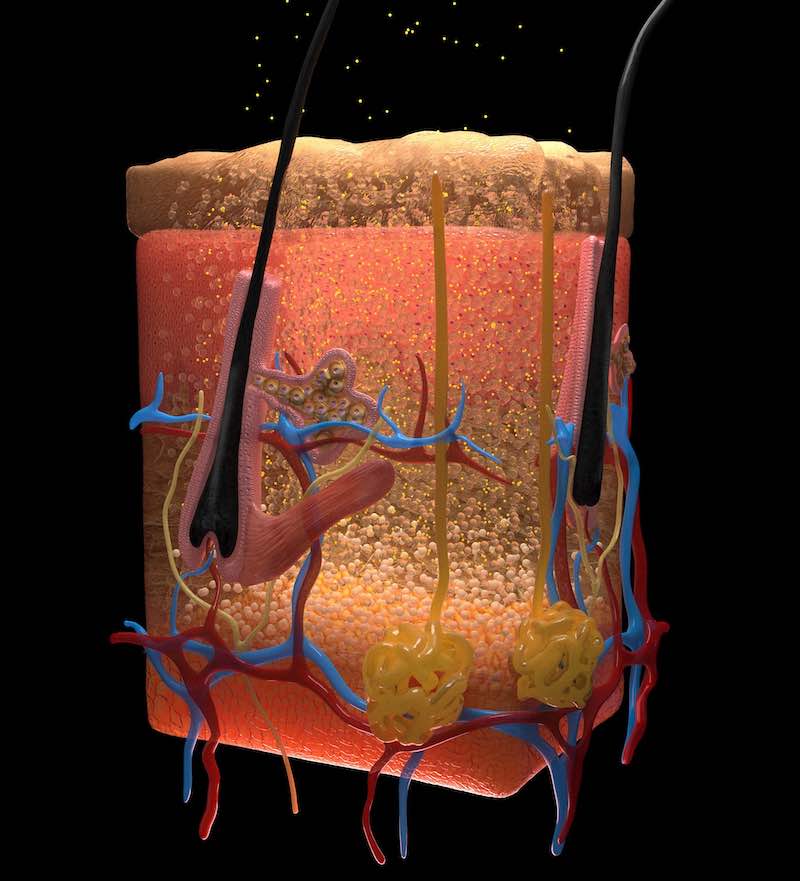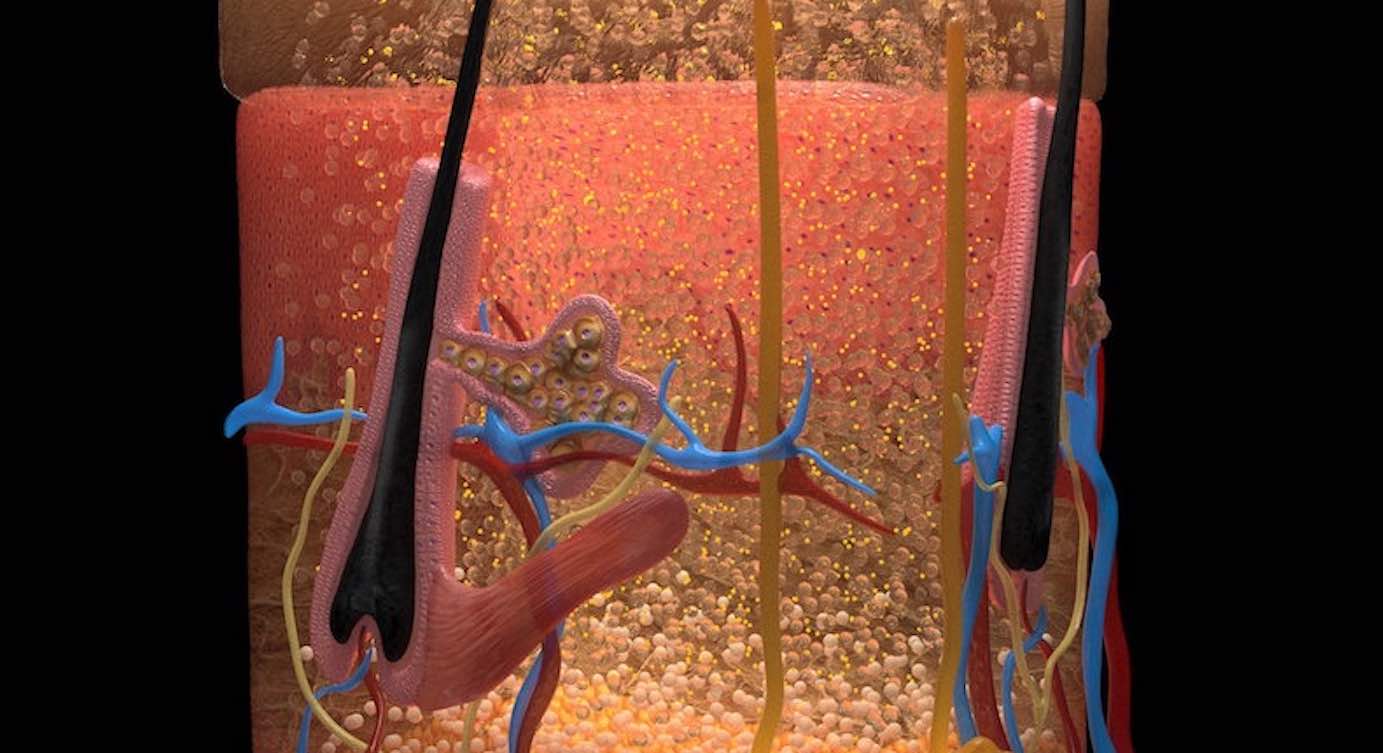
A revolutionary new technique uses food dye to provide a “window” into the body by making skin transparent.
By applying a mixture of water and a common yellow food coloring called tartrazine, researchers made the skin on the skulls and abdomens of live mice see-through.
The ground-breaking technique, described in the journal Science, gives medics a new way to see organs within a body by rendering overlying tissues transparent to visible light.
Also known as Yellow Dye #5, the technique needs to be tested on humans, as certain food dyes have negative side effects.
But the process was reversible in tests with animals, and scientists say it may ultimately apply to several medical uses—from locating injuries to monitoring digestive disorders and identifying cancers.
“Looking forward, this technology could make veins more visible for the drawing of blood, make laser-based tattoo removal more straightforward, or assist in the early detection and treatment of cancers,” said Dr. Guosong Hong, of Stanford University who helped lead the work.
“For example, certain therapies use lasers to eliminate cancerous and precancerous cells, but are limited to areas near the skin’s surface. This technique may be able to improve that light penetration.″
MORE BREAKTHROUGHS: Newly Discovered Protein Stops DNA Damage and Even Repairs it – Pointing to a Cancer Vaccine
The researchers developed a way to predict how light interacts with dyed biological tissues. The predictions required a deep understanding of light scattering, as well as the process of refraction, when light changes speed and bends as it travels from one material into another.
The team explained that scattering is the reason we cannot see through our body. Fats, fluids within cells, proteins, and other materials each have a different refractive index, a property that dictates how significantly an incoming light wave will bend.
In most tissues, those materials are closely compacted together, so the varied refractive indices cause light to scatter as it passes through. It is the scattering effect that our eyes interpret as opaque and colored.
The researchers realized if they wanted to make biological material transparent, they had to find a way to match the different refractive indices so light could travel through unimpeded.
Building on fundamental insights from the field of optics, the researchers realized dyes which are the most effective at absorbing light can also be “highly effective” at directing light uniformly, through a wide range of refractive indices.
GREAT CANCER NEWS: Lung Cancer Drug Elicits Unprecedented Results in New Trial
One dye the researchers predicted would be particularly effective was tartrazine. When dissolved into water and absorbed into tissues, tartrazine molecules turned out to be perfectly structured to match refractive indices and prevent light from scattering—resulting in transparency.
The research team first tested the technique on thin slices of chicken breast. As tartrazine concentrations increased, the refractive index of the fluid within the muscle cells rose until it matched the refractive index of the muscle proteins—and the slice became transparent.
The researchers then gently rubbed a temporary tartrazine solution on mice.
First, they applied the solution to the scalp, rendering the skin transparent to reveal blood vessels criss-crossing the brain.
Then they applied the solution to the abdomen, which faded within minutes to show contractions of the intestine and movements caused by heartbeats and breathing.
When the dye was rinsed off, the tissues quickly returned to normal. The tartrazine did not appear to have long-term effects, and any excess was excreted in waste within 48 hours.
The researchers suspect that injecting the dye should lead to even deeper views within organisms, with implications for both biology and medicine.
“We combined the yellow dye, which is a molecule that absorbs most light, especially blue and ultraviolet light, with skin, which is a scattering medium,” said study lead author Dr. Zihao Ou, Assistant Professor of physics at The University of Texas, Dallas.
“Individually, these two things block most light from getting through them. But when we put them together, we were able to achieve transparency of the mouse skin.”
“For those who understand the fundamental physics behind this, it makes sense; but if you aren’t familiar with it, it looks like a magic trick.
CHECK OUT THIS BREAKTHROUGH: MIT Makes ‘Astonishing’ Discovery That Light Can Vaporize Water Without Heat (for Clean Energy and Desalination)
“In addition, it’s very inexpensive and efficient; we don’t need very much of it to work.”
The researchers have not yet tested the process on humans, whose skin is about 10 times thicker than a mouse’s. They don’t know how much would be necessary to penetrate the entire thickness.
Human medicine today includes ultrasound technology to look deeper inside the living body—but the expense makes it inaccessible to a broad audience, while a method based on food dye would not be.
“Our research group is mostly academics, so one of the first things we thought of when we saw the results of our experiments was how this might improve biomedical research.
“Optical equipment, like the microscope, is not directly used to study live humans or animals because light can’t go through living tissue.
“But now that we can make tissue transparent, it will allow us to look at more detailed dynamics. It will completely revolutionize existing optical research in biology.”
GIVE YOUR FRIENDS A PEEK By Sharing the Amazing Research on Social Media…




















